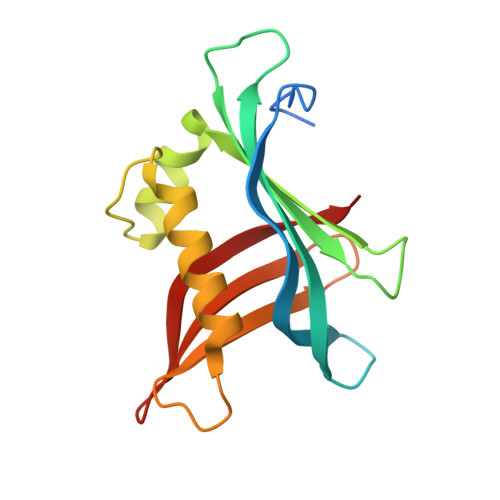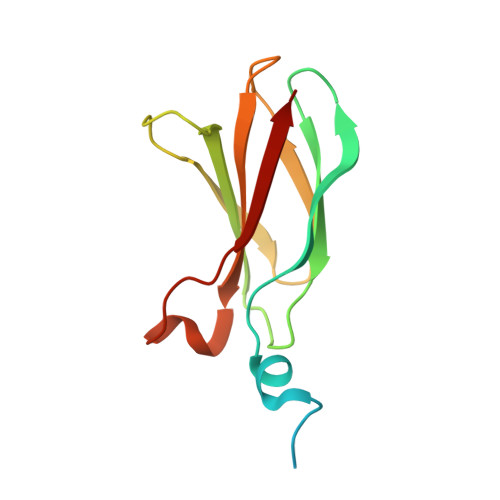Tuning SAS-6 architecture with monobodies impairs distinct steps of centriole assembly.
Hatzopoulos, G.N., Kukenshoner, T., Banterle, N., Favez, T., Fluckiger, I., Hamel, V., Andany, S., Fantner, G.E., Hantschel, O., Gonczy, P.(2021) Nat Commun 12: 3805-3805
- PubMed: 34155202
- DOI: https://doi.org/10.1038/s41467-021-23897-0
- Primary Citation of Related Structures:
6ZZ8, 6ZZC, 6ZZD, 6ZZG - PubMed Abstract:
Centrioles are evolutionarily conserved multi-protein organelles essential for forming cilia and centrosomes. Centriole biogenesis begins with self-assembly of SAS-6 proteins into 9-fold symmetrical ring polymers, which then stack into a cartwheel that scaffolds organelle formation. The importance of this architecture has been difficult to decipher notably because of the lack of precise tools to modulate the underlying assembly reaction. Here, we developed monobodies against Chlamydomonas reinhardtii SAS-6, characterizing three in detail with X-ray crystallography, atomic force microscopy and cryo-electron microscopy. This revealed distinct monobody-target interaction modes, as well as specific consequences on ring assembly and stacking. Of particular interest, monobody MB CRS6 -15 induces a conformational change in CrSAS-6, resulting in the formation of a helix instead of a ring. Furthermore, we show that this alteration impairs centriole biogenesis in human cells. Overall, our findings identify monobodies as powerful molecular levers to alter the architecture of multi-protein complexes and tune centriole assembly.
Organizational Affiliation:
Swiss Institute for Experimental Cancer Research (ISREC), School of Life Sciences, Swiss Federal Institute of Technology Lausanne (EPFL), Lausanne, Switzerland.















